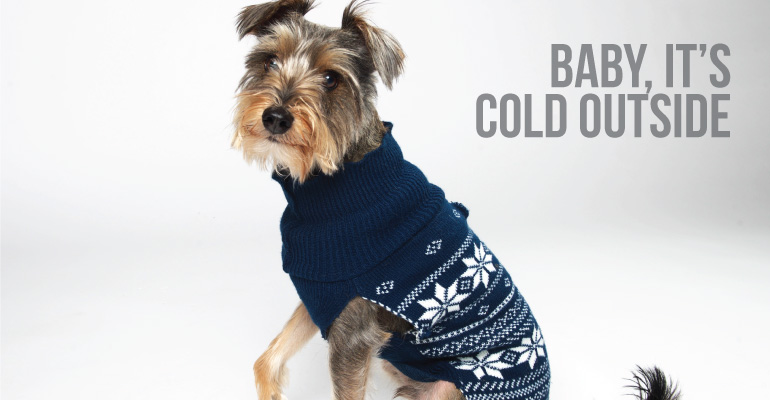
Does joint discomfort get worse when it's cold?
There’s a lot of evidence that changes in the weather can bring on a little more stiffness or discomfort in the joints. Many humans who deal with joint discomfort have noticed a correlation between an increased level of discomfort and rainy days.
Much of this phenomena is attributed to the change in pressure in the atmosphere when the temperature drops. Barometric pressure can trigger this increase in discomfort because tendons, ligaments, and muscles expand to adjust to this outside change. And it doesn’t really matter where you live — whether you’re dealing with the negative numbers in Wisconsin or Minnesota, or just experiencing much cooler weather than usual (like mid-twenties in Texas), it’s the change in temperature that plays the major role in this elevated ache.
Elements of a Canine Joint
- Two bone endings: like at the elbow, where the humerus bone meets the radius & ulna bones, for example
- Joint fluid: thick, viscous fluid that both lubricates the movement of the bone endings, and supplies nutrients to the surrounding cartilage
- A joint capsule: a membrane that keeps the joint fluid in place around the bone endings
- Cartilage: a smooth, porcelain-like surface that allows for gliding and protects the bone endings
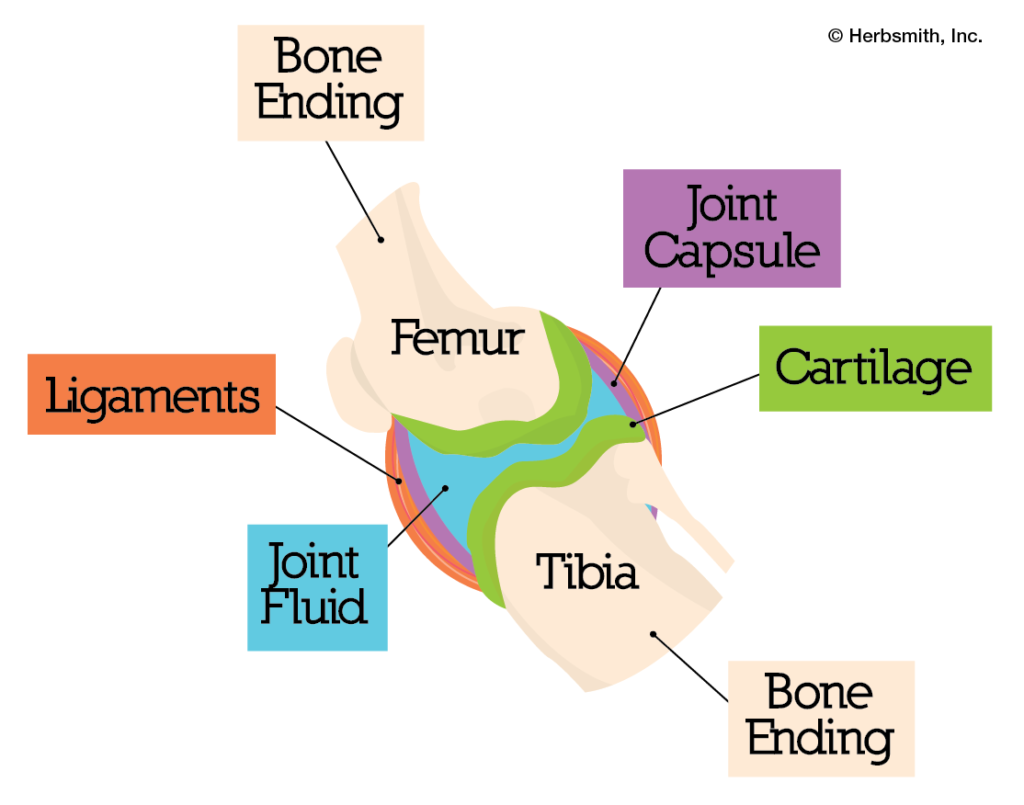
What generally causes joint issues?
The synovial tissue of the joint capsule can become inflamed, causing the release of degrading enzymes that break down joint fluid thickness. Thinner joint fluid = less lubrication, which means bone endings won’t glide as smoothly. Joint cartilage can also break down, causing the surface to become rough. This roughness, coupled with thin joint fluid, creates firing of nerve endings or discomfort during regular movement.
What can help?
Take a look at your pet’s diet and nutrient intake. Being scavenger carnivores, dogs would normally obtain joint fluids from the cartilage and bones of their prey. Now that they’re domesticated, their natural source of vital nutrients is missing (especially if they now live on a dry kibble diet). Dogs on a dry food diet need an alternate source for these joint fluid in order to support the proper function of their joints.
Glucosamine, chondroitin, and hyaluronic acid are common joint supplements found on the market. While these supplements are beneficial for your pet, a very small amount of the joint fluid components is actually absorbed into the body. Additionally, most of these supplements only work on a daily basis.
For example, when ingested, glucosamine will automatically start working to thicken joint fluid. However, hydrolyzing enzymes also enter the scene and break down the fluid, a natural (but also completely counter-productive) bodily response. The next day, the same thing will happen: glucosamine will thicken, enzymes will break down.
Glucosamine
metabolizes into chondroitin and hyaluronic acid molecules (which are 2-3 times bigger than a glucosamine molecule), can help to thicken joint fluid
Chondroitin
a structural component of cartilage; gives cartilage its “sponginess” and helps resistance to compression
Hyaluronic Acid
a component of synovial fluid that lubricates the joints
The combination of these varying-term supplements will work to support and improve your dog’s joints and overall musculoskeletal health, while also preventing the likelihood of future, more severe issues. Below are some great ways to aid your dog’s sore or weak joints:
MSM
- An organic source of sulfur
- May help to reduce inflammation from daily activity
Herbs
- Turmeric, yucca, corydalis and boswellia help to maintain healthy soft tissue
- Frankincense and ligusticum help invigorate blood and stop discomfort
- Cinnamon can warm the body and direct action to the limbs
Omega 3 Fatty Acids
- Fish and salmon oil, flax seed
- May help to reduce inflammation from daily activity
Warming Foods
- Ginger, molasses, basil, turkey, chicken, black beans, squash, and oats
- Help to soothe and relax joints
Consistent Moderate Exercise
- Helps to maintain muscle tone & healthy joints
- For a less-traumatic exercise, try swimming
Herbsmith Joint Supplements
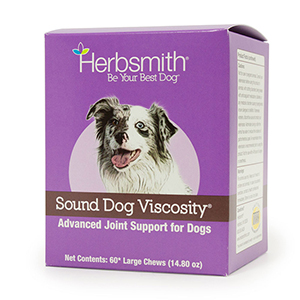
Sound Dog Viscosity
A glucosamine-based formula that aids in joint support by maintaining the normal viscosity of joint fluid. Contains Chondroitin, MSM, Hyaluronic Acid, and herbs to better address all aspects of joint support.
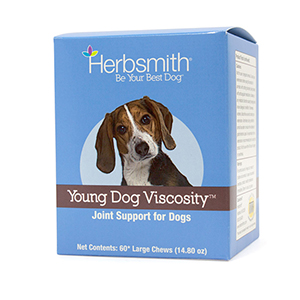
Young Dog Viscosity
A glucosamine-based formula for joint support in younger dogs, with Chondroitin, MSM, and Hyaluronic Acid (and without the herbs). Great for dogs in their first 3-5 years of life
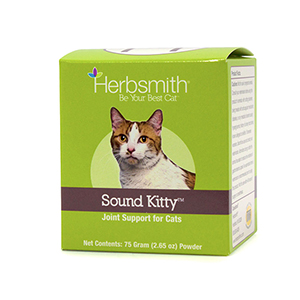
Sound Kitty
A glucosamine-based formula that aids in joint support by maintaining the normal viscosity of joint fluid. Contains chondroitin, MSM, hyaluronic acid, and herbs to better address all aspects of joint support.
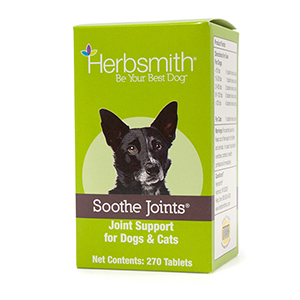
Soothe Joints
Assists in the maintenance of healthy joint capsules and in the preservation of thickened joint fluid. Useful for older dogs, especially during cold or damp weather.
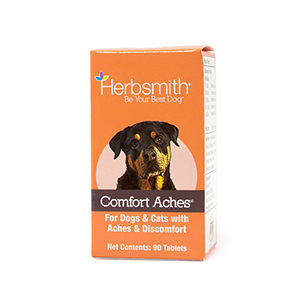
Comfort Aches
Maintains a healthy musculoskeletal system, even in the roughest of play. A unique combination of herbs with a gentle and harmonizing properties.



